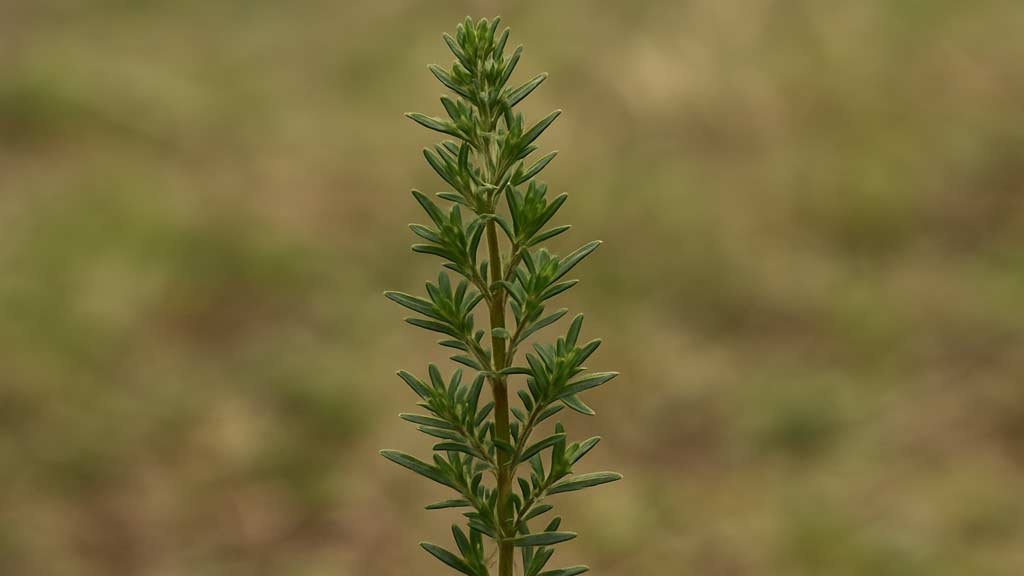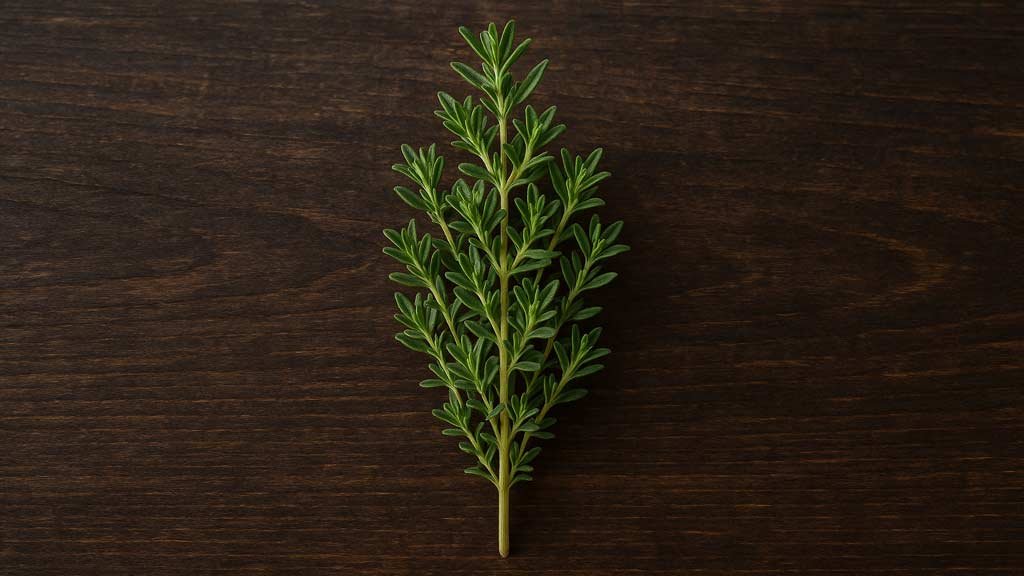The Forgotten Star of the Spice Rack
Savory herb doesn’t get the glory that basil or rosemary does, but it has a story. Both summer savory (Satureja hortensis) and winter savory (Satureja montana) have been cherished for centuries. They’re hardy, pungent, and more versatile than most cooks realize. In the Middle Ages, monks planted savory in monastery gardens, not only for flavoring but for easing digestion and even as a remedy against infections. Roman soldiers carried it into battle, believing it could spark courage and passion. Today, it still clings to a humble role in soups, stews, and bean dishes—but there’s more beneath the surface.
Table of Contents
A Taste That Bites Back
Summer savory has a peppery sharpness that prickles the tongue, while winter savory leans earthy and slightly bitter. Fresh leaves smell resinous, almost pine-like, with a whisper of thyme. When you crush them between your fingers, there’s a rush of green, spicy warmth. It’s no wonder people learned to cook beans with savory—its volatile oils cut the heaviness and tame flatulence. Think of it as the friend who makes awkward dinner tables a little less awkward.
Culinary Uses that Deserve Revival
- Seasoning beans, lentils, and peas to reduce gas
- Pairing with meats like lamb, pork, and game
- Infusing vinegars, oils, or butters
- Mixing into bread doughs for a peppery kick
- Fresh garnish on roasted vegetables
It’s strange, really—savory herb is one of those flavors that makes you stop mid-bite and think, why don’t I use this more often?
A Digestive Ally Through the Ages
Long before probiotic supplements or fancy digestive teas, savory was brewed as a simple herbal infusion. The herb’s essential oils, particularly carvacrol and thymol, have antimicrobial and antispasmodic properties. That means it doesn’t just flavor the food; it actively helps your stomach handle it.
People traditionally sipped savory tea after heavy meals to:
Even modern herbalists lean on savory for gastrointestinal support. It’s not a flashy cure-all, but it’s consistent. A few sprigs steeped in hot water make a tea that’s bold and aromatic, slightly bitter, but strangely satisfying after too much food.
Summer vs. Winter Savory: The Cousins with Attitude
Both types belong to the mint family, but they behave differently in the garden and kitchen.
- Summer savory is an annual, softer in flavor, with a short growing season. It’s considered the more refined, delicate cousin—good for salads and lighter dishes.
- Winter savory is perennial, evergreen in mild climates, woodier, more resinous, and sharper on the palate. This one thrives in poor soils and tough conditions, almost daring you to neglect it.
Gardeners often plant both, alternating between the fresh brightness of summer and the grounding, bitter strength of winter.

Savory as Medicine Beyond the Gut
While digestion is its claim to fame, savory herb has been used for other conditions too. Folk healers turned to it for respiratory infections, sore throats, and even toothaches. The essential oils carry antimicrobial punch, enough to discourage bacterial and fungal growth. Some traditions valued it as an aphrodisiac, others as a mild mood lifter.
Scientific studies back a few of these claims. The essential oil shows activity against several pathogens. Lab tests reveal antioxidant potential, which might help reduce oxidative stress. Nothing miraculous, but notable nonetheless—especially for a plant often dismissed as a kitchen-only spice.
A Gardener’s Friend
Savory doesn’t just feed people. It helps the garden too. Farmers once planted it near beans and onions to repel pests. Bees adore its small white to lilac flowers, which makes savory a pollinator-friendly plant. There’s a practical beauty in having herbs like this—feeding you, healing you, protecting your vegetables, and buzzing with bees all at once.
Rituals and Folklore
Every herb carries stories. In ancient Rome, savory was linked with love and lust, so much so that monasteries in the Middle Ages supposedly banned it from their gardens. The reputation mellowed over time, but in rural Europe, sprigs of savory were still tucked into bedding or hung over doorways to ward off misfortune. Even now, in some Balkan villages, savory is blended into salt mixes used at weddings and festivals. It’s flavor, medicine, and tradition braided into one.
How to Use Savory at Home Today
It’s simple enough. You don’t need elaborate recipes to enjoy savory’s benefits.
Quick Ideas
- Brew a tea: steep 1–2 teaspoons dried savory in hot water for 10 minutes.
- Add fresh sprigs to beans while cooking—remove before serving.
- Blend dried savory into sea salt for a table seasoning.
- Infuse honey with savory for sore throats.
- Toss chopped fresh savory into a potato salad for unexpected brightness.
Sometimes the best medicine is just eating herbs daily in small amounts, woven naturally into food.
Drying, Storing, and Preserving
Summer savory dries beautifully—hang small bunches in a dry, airy space until crisp, then crumble and store in airtight jars. Winter savory holds its leaves well even after frost, so you can harvest fresh longer. To capture the full punch of essential oils, harvest just before flowering. Infused oils or vinegars extend its reach through the year.
A Voice from the Kitchen
Here’s a memory: a winter stew simmering on the stove, thick with beans and smoked meat. My grandmother would toss in a bundle of dried savory, tied with string. She’d mutter that it “kept the pot from fighting your belly.” The stew had a bite, not from pepper but from the herb itself—sharp, resinous, grounding. That flavor sticks with me more than the meat ever did. It was the savory that made it whole.
Nutritional Notes
Savory herb isn’t a nutritional powerhouse like kale, but it brings trace minerals—iron, calcium, magnesium—and a modest amount of vitamins A and C. More importantly, its essential oils do the heavy lifting, offering antimicrobial support and a digestive push. In an age when people chase supplements, it’s almost comic how a simple herb provides so much in a pinch.
Final Thoughts on Savory Herb
Savory herb is proof that not every healing plant needs to be exotic or rare. Sometimes the best allies sit quietly in the cupboard, waiting for rediscovery. It’s not glamorous. It’s not trendy. But it works. In food, in the garden, in medicine, savory delivers a flavor and function that’s hard to replace. If you’ve forgotten it in the back of your spice rack, maybe it’s time to bring it forward.
Article Sources
At AncientHerbsWisdom, our content relies on reputable sources, including peer-reviewed studies, to substantiate the information presented in our articles. Our primary objective is to ensure our content is thoroughly fact-checked, maintaining a commitment to accuracy, reliability, and trustworthiness.
- Barnes, J., Anderson, L. A., & Phillipson, J. D. (2007). Herbal medicines (3rd ed.). London: Pharmaceutical Press.
- European Medicines Agency. (2011). Assessment report on Satureja hortensis L., herba and Satureja montana L., herba. EMA/HMPC/342334/2010. Retrieved from https://www.ema.europa.eu/en/documents/herbal-report/assessment-report-satureja-hortensis-l-herba-satureja-montana-l-herba_en.pdf
- Gulluce, M., Sahin, F., Sokmen, M., Ozer, H., Daferera, D., Sokmen, A., … & Ozkan, H. (2003). Antimicrobial and antioxidant properties of the essential oils and methanol extract from Satureja hortensis L. Journal of Agricultural and Food Chemistry, 51(14), 3958-3965. https://doi.org/10.1021/jf0340308
- Nostro, A., Germano, M. P., D’Angelo, V., Marino, A., & Cannatelli, M. A. (2000). Extraction methods and bioautography for evaluation of medicinal plant antimicrobial activity. Letters in Applied Microbiology, 30(5), 379-384. https://doi.org/10.1046/j.1472-765x.2000.00731.x
- United States Department of Agriculture, Agricultural Research Service. (2020). Satureja hortensis L., summer savory. Germplasm Resources Information Network (GRIN). Retrieved from https://npgsweb.ars-grin.gov/gringlobal/taxonomydetail.aspx?id=34088
- Wichtl, M. (2004). Herbal drugs and phytopharmaceuticals: A handbook for practice on a scientific basis (3rd ed.)




